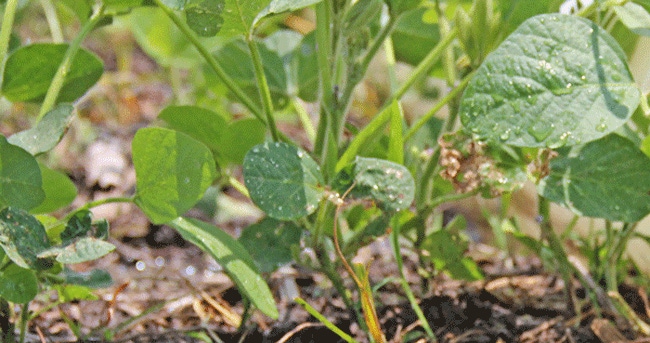June 14, 2012

Three-cornered alfalfa hoppers (3CAH’s) have been found in large numbers in north Alabama soybeans this year and some fields have already been sprayed twice.
Numbers of 3CAH’s are comparable to the relatively high numbers observed in 2010.
3CAH girdling of seedling soybeans can result in plants falling over later when strong winds occur. Often plants that have been girdled and do not lodge produce normal yields.
The current treatment threshold for soybeans less than 10 inches tall in Alabama is to treat when pests or damage is noted and stands are threatened.
The Mississippi seedling soybean treatment recommendation for 3CAH is to apply insecticide from plant emergence to 10 inches in height when the plant stand is reduced below the recommended plant populations.
Georgia’s soybean IPM guide recommends treating soybeans up to 12 inches tall when 10 percent of plants are infested with nymphs and/or adult 3CAH’s.
The most common method for sampling soybeans for 3CAH is the sweep net. There is no research based threshold for seedling soybeans which states the number of 3CAH’s per sweep for a given row spacing that is needed to trigger an insecticide application.
Reports indicate numbers of 3CAH’s per sweep are presently higher in drilled soybeans than in soybeans planted using a 30-inch or greater row spacing.
Soybean insecticide seed treatments to date have provided good control of 3CAH’s for approximately 3 to 4 weeks after planting, but with the heavy pressure we are currently seeing even fields that have been planted with insecticide-treated seed should be monitored for damage.
3CAH damage tends to be greater in soybeans planted behind wheat than in full-season soybeans. Seedling soybeans sprayed with an insecticide frequently see 3CAH populations rebound within 2 weeks and another insecticide application may be required.
(The Alabama insect situation in peanuts and cotton can be found here).
You May Also Like




